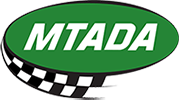One of the significant challenges of running any automotive dealership is moderating expenses. General managers and dealer principals are responsible for controlling many costs, including payroll, vehicle inventory, floorplan, and parts inventory. Monthly bills add up, and there is less revenue to put toward necessary resources. A major opportunity for expense control may be the dealership’s software stack.
According to the 2022 DMS Market Report by the Dealer Tech Nerd, the average franchise dealership spends $30,000 a month on software. With a mindset shift and careful evaluation, those costs can be reduced.
A Breakdown of Dealership Software Costs
Dealership software can be broken down into 29 categories. Here is an outline of the most expensive and necessary solutions for a typical franchise dealership.
- The Dealer Management System or DMS is the core hub that connects all dealership data between departments and even multiple stores within a dealership group. The average monthly spend is $6,300.
- Many areas of a business use Customer Relationship Management (CRM) tools to execute, track and analyze communications with customers and prospects, and maintain a historical profile of these interactions to help grow relationships. This software costs $2,000 per month.
- Equity Mining software helps a dealer use customer information from a CRM and evaluate the revenue potential of a customer, considering trade-ins, future potential services, and more. This tool costs $2,000 per month.
- Vehicle Inventory Management is software that holds the details for each vehicle on the lot, including owner history, the going market value, photos, and more. This software averages $1,700 per month.
Amounts vary by category, but all tools contribute to this significant monthly cost. Knowing the value of each tool will allow you to evaluate your needs and consider how you might reduce costs.
How to Evaluate Your Software Integrations
Take stock of the software vendors you use. Gather your contracts, invoices, and any other information. The tools are likely integrated with your DMS. Here are some suggestions on how to evaluate them.
- Take Note of Redundant Services As tools evolve and update, the features between some of them can become similar. After several enhancements, the CRM you originally purchased to manage communications with your contacts may now be able to manage your website. This may no longer be necessary if you are also paying for a website maintenance tool.
Do not immediately cut out every duplicative resource. Make sure any tool you decide to remove from your stack can be sufficiently replaced. Consider how much longer you have on individual product contracts. It may be financially beneficial to wait before ending your relationship with one or more of them. - Tie The Value of Each Vendor to Historical Revenue Some software in your dealership may play a significant role in the success of your business, and others may have less of an impact. If you find some tools fall into the latter category, you may want to consider eliminating them.
Beyond expense control at your dealership, consider why a particular tool is not benefitting your business. Is it not doing its intended job, or has your business changed in ways that make the tool no longer a good fit? This is a great opportunity to involve your staff by discussing their usage of the software and how well they like it.
If the general purpose of the software is valuable, but the current product does not provide a good experience for your staff, consider replacing the software with another vendor rather than removing it altogether. Replacing a key tool that the staff does not value with a better one could increase your revenue. - Consider How Efficiently the Software Works Together Dealership software should be integrated in a way that can share data efficiently. Data typically flows through the DMS, so consider this during your evaluation. If your tools are not communicating with each other, that means some of your staff may need to log into different interfaces and move data manually. It could also mean you are not getting the complete picture of what is happening in your dealership.
Your staff may spend more time dealing with the tools and less time bringing in revenue. Putting a focus on the integration of your software with your DMS can increase the efficiency of your dealership and offset costs. - Reduce Your Software Costs but Not the Value
Now that you have evaluated your software stack, chosen what software can be removed, and have a better picture of how your tools tie to overall revenue, it is time to take action. Talk to selected software vendors about finishing but not renewing contracts. Make sure your chosen tools integrate well with your DMS. This should not only reduce costs but make the combination of your chosen tools more valuable to the dealership.
Consider what you can do with these savings to benefit your dealership even further. Can you upgrade any software that would increase productivity? Perhaps somewhere else in the dealership needs an increase in budget. Can these savings go towards increasing customer satisfaction? These are all possibilities that may not have been an option before. Good luck reducing your costs and increasing your profits!










